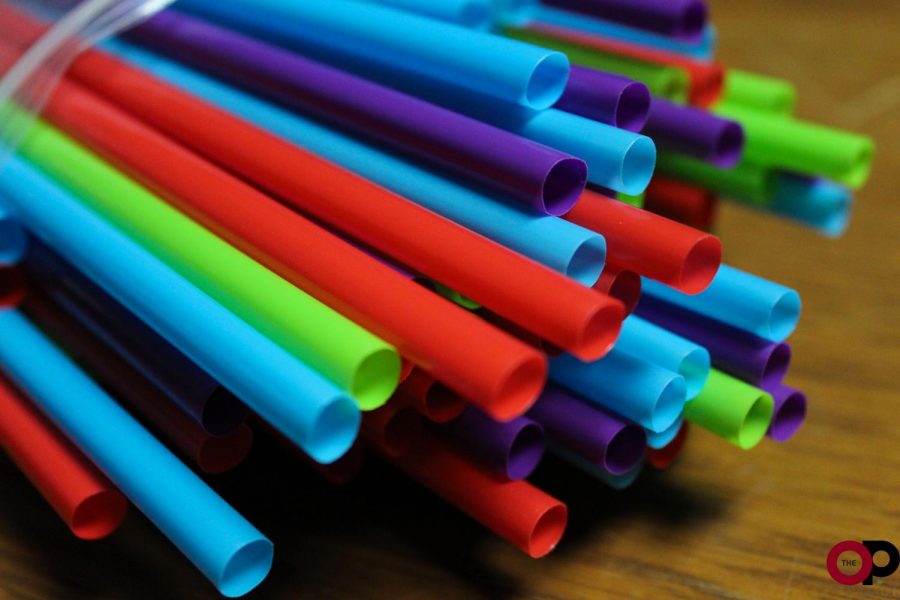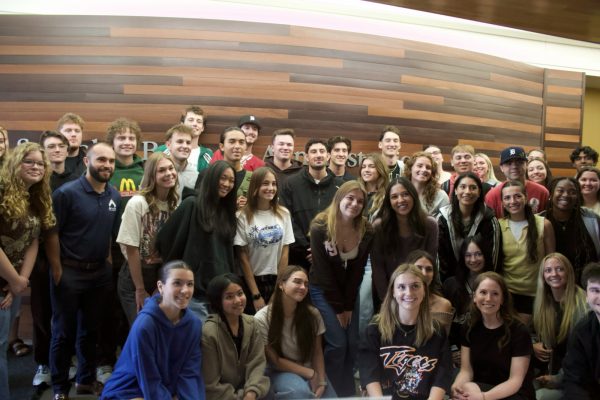Universities taking steps to ban plastic straws from their campuses, but OU isn’t there — yet
As plastic straws find ways to the garbage, reusable straws sneak through the doors of vastly student-populated locations, such as Oakland University and Starbucks. As Starbucks locations on and near campus ban the straws, OU students participate in a trend without even realizing it.
The product used to sip your favorite drink is slowly getting banned in cities and states all around the world, such as New York City, Hawaii, California, Washington, New Jersey and Florida.
But what did plastic straws do to harm anyone? What makes reusable straws so special? What are people supposed to drink out of? You’re in luck — there are plenty of options.
According to National Geographic, it’s estimated that 500 million straws are used every day in the U.S. alone. In July 2018, Seattle became the largest U.S. city to ban plastic straws. Because of the pollution caused by the straws, many corporate companies — including Starbucks — now plan to ban them completely within the next couple of years.
Last year, Starbucks announced plans to phase out plastic straws by 2020. As Starbucks has begun to enforce that straws are out and strawless lids are in, they have become one of the largest social media influencers to make this change active.
Not only does Starbucks use strawless lids to satisfy their customers, but they also sell metal and glass products as alternatives.
Because Starbucks is one of the largest companies involved in the plastic straw ban and one of the most utilized coffee shops by college students, the trend has become implemented without many even realizing it.
Reducing waste and sheltering the environment through minimizing the use of this minuscule product has also become a trend universities have latched onto.
In April 2018, the University of Portland became the first university in the United States to ban plastic straws, with Dartmouth College, Knox College and Chico State all following suit shortly after.
“Chico State University in California, Knox College in Illinois and the University of Portland in Oregon stand among the other institutions now stocking their dining facilities with paper straws,” wrote Matt Zalaznick, senior writer at District Administration Magazine and University Business Magazine.
Other colleges have implemented this paper straw trend and have begun proposing a variety of alternatives. Because of this, one might wonder whether or not OU has a straw policy.
“To my knowledge, there is no plastic straw ban or any type of policy on campus,” said Page Gardner, Oakland University Student Congress campus health director. “I believe Chartwells is working on replacing their plastic utensils with something more environmentally friendly, with involvement from student orgs like SPB and SAFAC. Plastic straws are a little more challenging, as a lot of people with different abilities need the plastic straws. The plastic utensils are an awesome start, though.”
Plastic straws remain available for student use in the Oakland Center and several other buildings across campus, as do similar products such as plastic cups and coffee stirrers.
“OU’s catering companies currently still supply these products,” said Assistant Director of Catering Carmen Perini. “I am not sure where OU stands in the plan to ban plastic straws, but as of right now, they aren’t going anywhere.”
Chartwells Director of Operations Patrick Strzyinski confirmed that, while OU doesn’t currently have an anti-plastic straw policy, it is being considered for the future.
“There is not technically a ban on straws on campus, but we are trending in that direction,” he said. “Some locations have stopped placing them near soda fountains, while others are only offering them upon request. We are also researching alternatives such as the type of lid we use or a biodegradable straw.”
Are these straw bans actually as sustainable as research says, though?
Some studies say that the banning of straws are not as effective as we think. People with disabilities rely on plastic straws, and replacements may not be as great for the environment.
“Going without straws can mean struggling through the physical motion of putting a drink to a mouth, or leaking liquid into the lungs or choking,” wrote CNN journalist Ayana Archie.
Additionally, due to the size and weight of plastic straws, the billions of straws add up to only about 2,000 tons of the nearly 9 million tons of plastic waste that exists in oceans.
Is this an issue that students are actually concerned about?
“Honestly, I don’t even realize that I haven’t used a plastic straw in so long,” OU student Kennedy Zaborowski said. “I get a venti iced vanilla latte and have been drinking it without a straw for months now.”
Some students are drinking straw-free, but without trying to be environmentally conscious.
“I don’t think I really use plastic straws, but I don’t really think of it in a way of helping our environment,” said former OU student Rachel Sledzinski. “I just like to carry around my own water bottle most of the time. I go to the gym multiple times a week, so it’s easiest if I bring a reusable bottle that I can refill; it doesn’t have a straw.”
Others don’t pay as close attention to whether they are using plastic straws.
“I don’t really pay attention to whether or not I use a plastic straw or not,” OU student Amelia Lewis said. “I mean, I guess if I think about it, I use both plastic and metal. I love a large Coke from McDonald’s, so I use plastic straws from there or at restaurants. If I’m going to the dance studio or taking a water bottle with me anywhere, it’s usually one of those plastic, reusable tumbler cups or a metal tumbler cup from Starbucks.”
While plastic straws aren’t banned from OU’s campus yet, it appears that a handful of students aren’t using them anyway due to the more convenient alternatives available.
The next time you’re walking around campus or studying at your local Starbucks, take a second to look around and ask yourself, “What are students drinking out of?”






